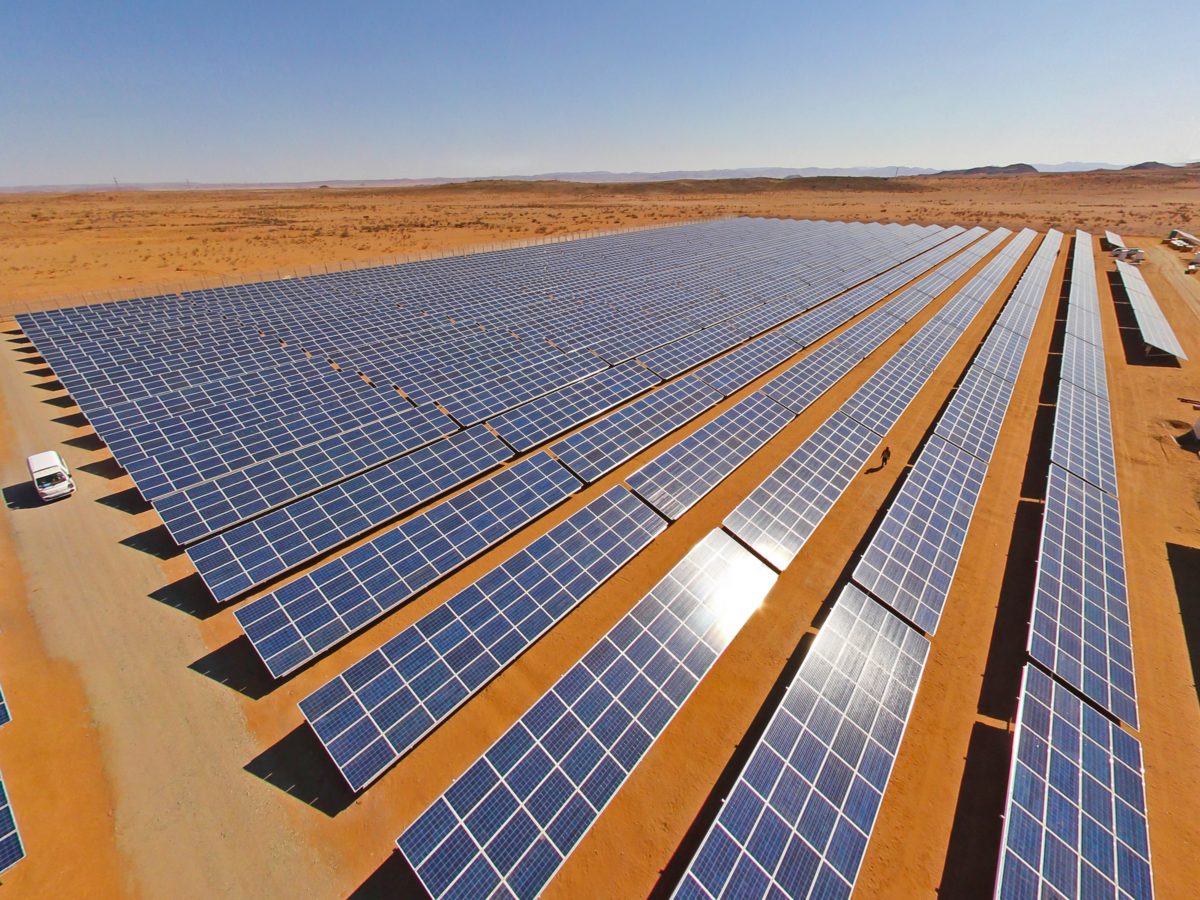Two 100 MW solar power plants in South Africa’s North West province have reached financial close, with construction now expected to begin Sola Group, a Cape Town-based renewables developer, secured approval from the National Energy Regulator of South Africa (Nersa) to build the projects back in May.
The corporate power purchase agreement was signed in March with US-based titanium products supplier Tronox, which operates several mines and smelters in the region. The electricity will be supplied to five Tronox facilities in the Western Cape and KwaZulu-Natal through wheeling agreements, under which state-owned utility Eskom will pay for the maintenance and upkeep of infrastructure to transmit the electricity.
“These are the first projects of this scale in South Africa that are based on pure private bilateral trade. It's also a great plus for the country that these projects are 100% South African owned, financed, constructed, operated and managed,” said Dom Wills, CEO of Sola.
The projects raised a total of ZAR 4 billion ($233.6 million) of funding for construction and development. Sola partnered with African Rainbow Energy to raise the funds.
The debt arrangement was led by PepperTree Capital, with the Development Bank of Southern Africa (DBSA) lending ZAR 3.1 billion. Other lenders included three of the South Africa’s major banks – Absa, Nedbank, and Standard Bank. The legal advisers on the transaction were Pinsent Masons, Hogan Lovells, Faskens, Allen & Overy and ENS, said Sola.
The design and construction of the projects will be the responsibility of South African construction company WBHO, with engineering services supplied by Sola.
The company sees the project as a potential breakthrough for the private energy market.
“We hope the model of private power through bilateral agreements continues to become more widely adopted,” said Wills. “The benefits to the end user are competition, choice and ultimately a more diverse contribution to the power system.”
The South African government raised the threshold for the distributed-generation solar segment to 100 MW in August 2021, exempting developers from applying for generation licenses to improve the entire permitting process. The new rules also imposed a wheeling fee to be paid Eskom for the maintenance and upkeep of its infrastructure to transport the energy.
This content is protected by copyright and may not be reused. If you want to cooperate with us and would like to reuse some of our content, please contact: editors@pv-magazine.com.



By submitting this form you agree to pv magazine using your data for the purposes of publishing your comment.
Your personal data will only be disclosed or otherwise transmitted to third parties for the purposes of spam filtering or if this is necessary for technical maintenance of the website. Any other transfer to third parties will not take place unless this is justified on the basis of applicable data protection regulations or if pv magazine is legally obliged to do so.
You may revoke this consent at any time with effect for the future, in which case your personal data will be deleted immediately. Otherwise, your data will be deleted if pv magazine has processed your request or the purpose of data storage is fulfilled.
Further information on data privacy can be found in our Data Protection Policy.